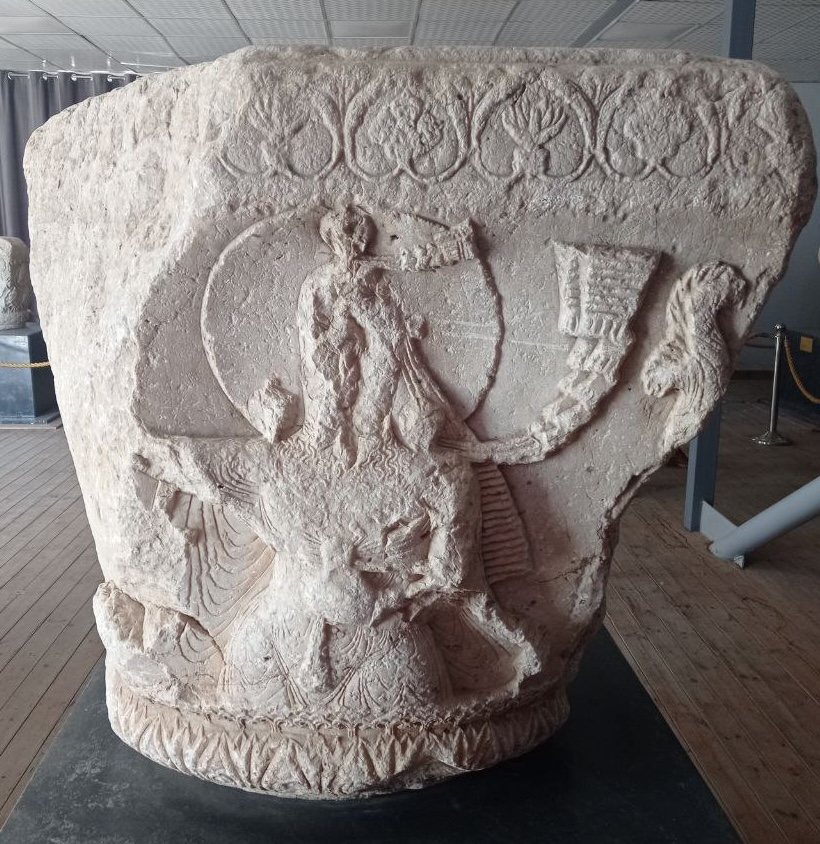Thread: In 2017, after the discovery of a strange trapezoid Natufian culture "shrine" (L) with paved floor and central hearth, I wrote an article asking is there a link between it and and Lepenski Vir houses (R) with paved floors and central hearths... oldeuropeanculture.blogspot.com/2017/12/natufi… 



As a link I proposed Pre Potery Neolithic A and B cultures of levant, which were established by the descendants of the Natufians...en.wikipedia.org/wiki/Pre-Potte…
They, just like Lepenski Vir people buried their dead under the floors of their houses. And they plastered the heads of their ancestors, and displayed them in their settlements (L). Well Lepenski Vir people made stone heads and displayed them in their settlements (R)... 



Well, I just found out today that it seems someone else pointed at possible link between Lepenski Vir culture and Pre Pottery Neolithic Levant cultures. In 2007...
Dusan Boric from Columbia University. In his article "The house between grand narratives and microhistories: a house society in the Balkans" he says that: 

And that's all 10 years before the discovery of the Natufian trapezoid "shrine"...You should read his article. It's an interesting one. The archaeologists who excavated Lepenski Vir, believed that the trapezoidal houses developed from shrines and were sacred "house-shrines"
They believed that the people from Lepenski Vir built their houses to resemble the rocky outcrop, cliff, hill, called Treskavac, which is clearly visible from the settlement site. 

The hill looks like a flat top pyramid. The houses look exactly like the hill. They are equilateral triangles with the cut off top. 

But why would anyone bother building houses that look like a hill? Because every summer solstice, at sunrise, if you stand at the Lepenski Vir site, you see this. The sun on top of the pyramid... 

I mean that will leave an impression, right? Now we are talking about 6300-6000 BC...And people in the Balkans being obsessed with sun on top of a pyramid. So much so that they built house-shines in its liking...
Do you think this is where the idea that "pyramids are cool" comes from?
Here is something interesting about these Mesolithic pyramid worshipers. The carried two very interesting haplogroups: I2 and R1b. The I2 are generally accepted as being Neolithic "Old Europeans". But R1b are generally thought to be Bronze Age "Invaders from Eurasian steppe"...
It seems reality is different from "generally accepted and believed" things...From the pyramid worship point of view, it is very very very interesting that these Lepenski Vir R1b people seem to have dispersed in all directions...Some time around 6000BC...
The earliest R1b R-V88 sample from Lepenski Vir is about 11,000 years old. From the Balkans, these individuals at some stage, in one or many waves, moved to Ukraine, where their eastern expansion ends. They also moved north, to Germany, and south, to the Mediterranean.
One theory is that at some point all R-V88 lived in Sardinia and that around 7,500 years ago some of them crossed from Sardinia into Africa. It is also possible that RV88 arrived to Africa through Levant. But to Africa they arrived, before any pyramid was built there...
Some of these R-V88 carriers moved from the coast towards, what was then, Lake Mega Chad, a much larger version of Lake Chad, that existed during the Green Sahara period, which lasted until 5,500 years ago...
As the area became dry, they moved further and further south. They lived in the oases, rivers, and lakes of Niger, Cameroon, Chad, and Nigeria. Their genes are today found in west African populations...
But not all of the R1b R-V88 moved into African Interior. They show up today throughout the Mediterranean, including Spain, Malta, Lebanon, Egypt, and amongst Jewish populations...
Were some of them among the people who one day, all that time ago, stood on the Giza plateau looking at the vast emptiness before them and said: you know what would look great here? A pyramid. To remind us of the Old Country...
One thing that really puzzles me. Lepenski Vir culture was both territorially and numerically small, at least based on the archaeological data. Yet, they managed to cross half the world, spread all over Mediterranean and central Africa. How? 

In Cameroon alone their descendants make up 90% of the male population...Something is wrong here...
I think we are missing something important...
• • •
Missing some Tweet in this thread? You can try to
force a refresh
























